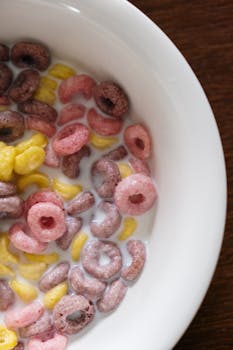
More Weight Control, Nutrition & Exercise Articles
The Shelf Life of Raw Milk: How Long Can You Keep It Fresh?

When it comes to storing raw milk, understanding its shelf life is crucial for health and safety. So, how long does raw milk last? Unlike pasteurized milk, raw milk is susceptible to bacterial growth, making its storage time shorter. Consumers often wonder about the best ways to keep raw milk fresh while retaining its nutritional benefits, and in this article, we’ll explore key elements that influence the shelf life of raw milk.
How Long Does Raw Milk Last?
The shelf life of raw milk largely depends on storage conditions. Typically, raw milk can last anywhere from 7 to 10 days if properly refrigerated at or below 40°F (4°C). However, some factors like initial bacterial load, hygiene during milking, and storage cleanliness can significantly affect this duration.
Even under optimal conditions, raw milk can sour faster than pasteurized milk due to its natural bacteria. Thus, monitoring changes in taste and smell is vital. In comparison, pasteurized milk has a longer shelf life because pasteurization effectively kills most bacteria that cause spoilage.
Factors Influencing Raw Milk Shelf Life
Temperature Control
The primary determinant of how long raw milk remains fresh is temperature. Consistently storing raw milk in a cold environment slows down bacterial growth. Avoid leaving raw milk out in warm temperatures, as this accelerates spoilage.
Sanitation During Milking
The cleanliness of milking equipment and the surrounding environment highly impacts the milk’s initial quality. Ensuring that all milking tools and containers are thoroughly sanitized reduces bacterial contamination, extending the milk’s shelf life.
Handling and Storage Techniques
Using clean, airtight containers to store raw milk prevents exposure to contaminants and odors. Additionally, minimizing milk exposure to light and air helps preserve its quality. Regularly checking and cleaning storage containers ensures they remain sterile.
Signs That Raw Milk Has Gone Bad
Identifying when raw milk is no longer safe to consume is essential. Common indicators include a sour smell, off-taste, and changes in texture. If you notice any of these signs, it’s best to discard the milk to prevent health risks.
Visual Changes
Cream separation and clumping may naturally occur in raw milk, but sudden, unusual textures typically indicate spoilage. Discoloration, particularly a yellowish tint, can also suggest the milk is past its prime.
Understanding the Risks
Consuming spoiled raw milk can lead to foodborne illnesses. While some advocate for its natural benefits, careful attention to handling and storage is necessary to avoid potential health hazards. For more insights on hidden health concerns, consider reading this article on safe health practices and hidden causes of illness.
Best Practices for Prolonging Freshness
To maximize the freshness of raw milk, adopt these storage tips:
- Refrigerate immediately after purchase or milking.
- Use clean and sterilized containers.
- Maintain a consistent cold temperature.
- Avoid cross-contamination by keeping raw milk away from other foods.
Knowledge about the shelf life of raw milk allows consumers to make informed choices. While it typically lasts up to 10 days, proper storage and handling are crucial. Continue to evaluate freshness through sensory checks and adhere to recommended safety practices.
For further reading on general health information, you can visit this comprehensive article on health.
- Raw milk typically lasts 7-10 days when refrigerated.
- Storage conditions significantly impact freshness.
- Proper sanitation and handling reduce spoilage risks.
- Look out for changes in smell, taste, and texture.
- Consuming spoiled milk can pose health risks.
What is raw milk?
Raw milk is unpasteurized milk that comes directly from the cow or another animal. It is rich in natural bacteria, some of which are beneficial.
What are the risks of drinking raw milk?
Consuming raw milk can increase the risk of foodborne illnesses due to potential bacterial contamination, such as Salmonella or E. coli.
How can I tell if raw milk has gone bad?
Signs of spoilage include a sour smell, off-taste, clumpy texture, and discoloration. If any of these occur, it’s advisable to discard the milk.
Can raw milk be frozen?
Yes, raw milk can be frozen to extend its shelf life. It is advisable to use freezer-safe containers and leave room for expansion. Thawed milk may have a different texture but is still safe for consumption.
Is raw milk healthier than pasteurized milk?
Raw milk contains more natural nutrients, but it also poses higher health risks. Pasteurized milk is treated to reduce bacteria and extend shelf life, making it a safer choice for many consumers.
Other Articles You May Find of Interest...
- Does Orange Juice Go Bad? Tips for Storage and Freshness
- Power Up Your Health with These Potassium-Rich Foods
- Is Eating Kiwi Skin Healthy? Discover the Benefits and Risks
- Is Tuna a Good Source of Omega-3 Fatty Acids?
- Empowering Strength: Celebrating Women with Muscles
- Discover the Health Benefits of Black Elderberry Tea for Immune Support
- Discover the Protein Power of Shrimp and Its Health Benefits














